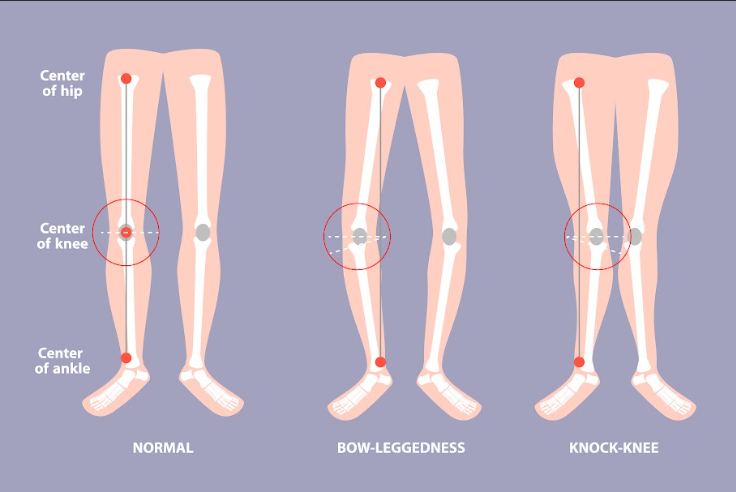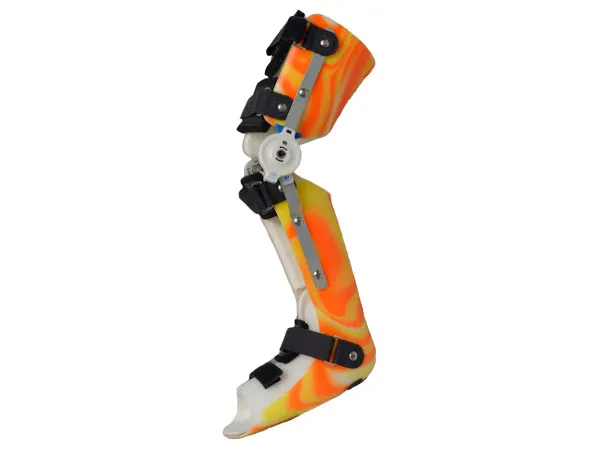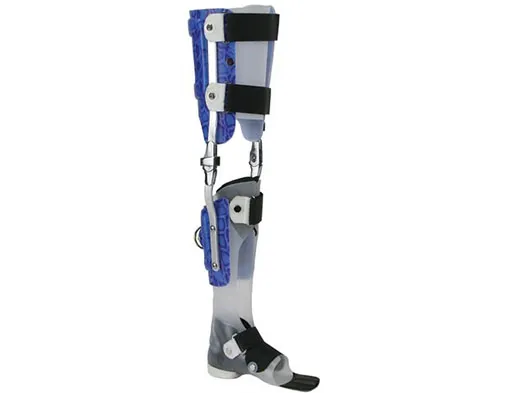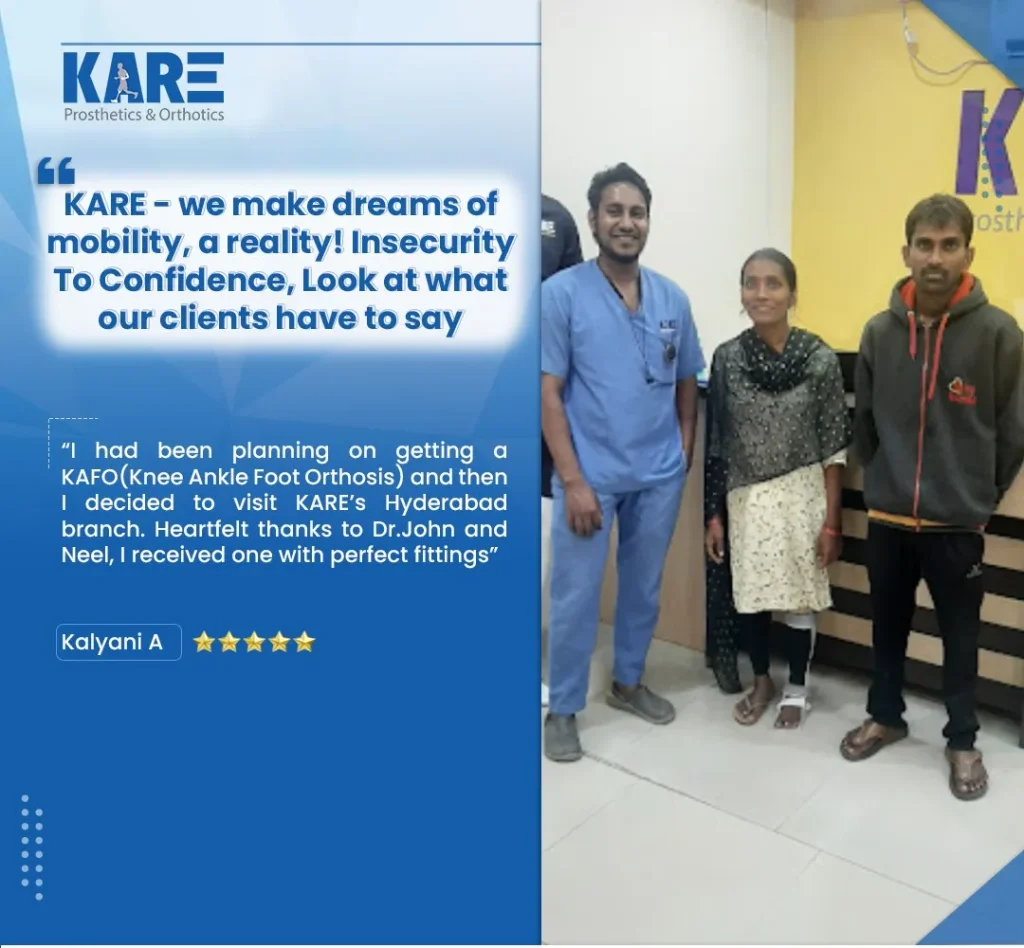
Are you wondering how to correct bow legs in adults? Also known as genu varum, bow legs occur when the knees remain apart even while the ankles touch, giving the legs a curved appearance. While it’s common in toddlers and often corrects itself, persistent or adult-onset bow legs require proper treatment.
In this blog, we’ll discuss everything about bow leg correction, exercises, supportive braces, orthotics, and treatment options.
What Is Bow Legs (Genu Varum)?
When legs bend outward at the knee, and knees are apart even when the ankles touch, the condition is called bowlegs or genu varum. Imagine a line from hip to ankle; it should go right through the middle of the knee. But if this line passes inside the knee, we say it’s bowlegged.
What Is the Main Cause of Bow Legs?
It’s normal for toddlers to have bow legs as it is a part of how they grow, and their legs get straight as they get older. but persistent or adult cases are often due to:
- Vitamin D deficiency (Rickets): weakens bones, causing curvature.
- Blount’s disease: growth disorder of the shin bone.
- Osteoarthritis: degeneration of joints with age.
- Bone malformations: congenital or acquired deformities.
- Lifestyle & nutrition issues: lack of Vitamin D, calcium, or obesity.
Understanding the root cause helps in choosing the proper bow leg treatment method.
How to Correct Bow Legs in Adults Naturally at Home?
Wondering how to correct bow legs naturally? Check these:
- Stretch and do strengthening exercises regularly
- Use a brace or a correction belt.
- Wear corrective shoes for bow legs.
- Ensure proper posture
- Take physiotherapy sessions.
Mild bowlegs can be corrected with natural remedies, but orthotic braces or surgery may be needed for moderate to severe cases.
Can Orthotics Correct Bow Legs?
Yes. Orthotics such as custom shoe inserts can help improve leg alignment by adjusting how weight is distributed across your feet. But, they cannot make the bones straight, they:
- Support better posture and gait
- Lessens pressure on knees and ankles.
- Increases effectiveness of bow leg correction exercises.
Orthotics work best when combined with corrective shoes for bow legs or braces.
Can Bow Legs Be Corrected with Braces?
Yes. The knees and lower legs can be aligned over time by using braces that apply gradual pressure. They are effective in both children and adults and include:
- Bow leg correction belts
- Using KAFOs (Knee-Ankle-Foot Orthoses)
- Nighttime splints
- Wearing adjustable leg braces
Braces help to solve long-term complications in children. In adults, they support joint function and reduce pain.

Bow Legs Correction Exercises That Work
You should understand that a bow leg correction cannot be permanently fixed with mere exercises. No amount of exercise can change the shape of the bone. However, there are some benefits from exercising.
Surgery is the best way to correct bow legs. But some particular exercises help to make the legs straight and protect the knees. Bow leg correction is different for children. The problem usually resolves as a child grows. There are few issues that continue can be corrected with braces, physical therapy, or surgery. Exercising help to make the muscles around the hips, thighs, and knees stronger and correct mild bow legs.
Best Exercises for Bow Legs:
- Strengthen hip abductors with clamshells.
- Improve stability with leg raises.
- Increase flexibility with hamstring & quad stretches:
- Enhances posture with the bridge pose yoga asana.
- Align knees inward with inner thigh strengthening:
Use a bow-legs correction belt for better results.
Who Should Use The Bow Leg Correction Belt?
Bow leg correction belt is specifically for children who are experiencing bow legs or knock knees. However, adults can use them in particular cases to help with pain or discomfort associated with these conditions and achieve a straighter position, improve alignment and balance.
How To Correct Bow Legs In Adults
Non-Surgical Options to Correct Bow Leg:
1. Bow Legs Correction Exercises
While exercises for bow legs cannot change bone shape, they strengthen muscles and improve posture. Effective routines include:
- Clamshells: strengthen hip abductors.
- Leg raises: improve stability.
- Bridge pose yoga: supports posture correction.
- Hamstring and quad stretches: improve flexibility.
- Inner thigh strengthening: helps realign knees inward.
Combine exercises with braces or orthotics for best results.
2. Braces for Bow Legs
Braces apply gradual pressure to realign the legs. Common options include:
- Bow legs correction belt
- KAFOs (Knee-Ankle-Foot Orthoses)
- Nighttime splints
- Adjustable leg braces

3. Corrective Shoes & Orthotics
Orthotics such as custom shoe inserts don’t straighten bones but they:
- Improve leg alignment
- Reduce pressure on knees and ankles
- Support posture and gait correction
- Enhance effectiveness of bow legs correction exercises
Corrective shoes for bow legs work best when combined with braces and physiotherapy.
4. Nutritional Support
Diet plays a vital role in bone health. Include:
- Calcium-rich foods (milk, cheese, leafy greens)
- Vitamin D sources (sunlight, fortified foods, supplements)
- Weight management to reduce knee strain
Surgical Bow Legs Treatment
Surgical Bow Legs Treatment options for bow leg correction are:
- Osteotomy Procedures: It’s an invasive bow leg treatment. The surgery involves cutting and realigning of the bones.
- Knee Replacement: When bow legs get complicated, they may lead to arthritis and joint pain. Knee replacement is the only way to lessen pain and increase mobility. A surgical process helps to replace the affected joint with an artificial implant.
Recovery and Rehabilitation: Recovery may take 3-6 weeks. Crutches, knee braces and walking aids help to limit your joint movement. Also, taking rest and avoiding excess weight are crucial.
Frequently Asked Questions
Q: What is the best treatment for bow legs?
For children, braces and exercises may correct the issue. In adults, a combination of orthotics, bow leg correction exercises, and KAFO braces is recommended.
Q: Can bow legs be corrected without surgery?
Yes. Some bowlegs can be corrected and managed through non-surgical options like braces, belts, and physical therapy. Advanced structural deformities may need surgery.
Q: Are braces for bow legs uncomfortable?
Modern braces, including bow leg correction belts, are designed for comfort and long-term wear. They’re adjustable and customised based on your specific alignment issue.
Q: How long does it take to correct bow legs?
It depends on age and severity. Children may see improvement within months, while adults may require 6–12 months of consistent treatment and follow-up.
Q: Is bow leg correction possible at any age?
Yes, but results vary. Children respond faster to treatment, while adults require a comprehensive approach including bracing, orthotics, and physiotherapy.
Q: What Is the Name of the Splint for Genu Valgum?
Genu valgum (knock knees) is treated with valgus correction splints, while genu varum (bow legs) is managed with varus correction braces or KAFOs.
Q: Do bow Legs Affect Height?
A person may seem short if he has poor posture and alignment. Therefore, quick medical intervention and correction help to correct and improve posture. This makes the person stand taller and straighter, adding a visual height boost.
KARE’s Role in Bow Leg Correction
At KARE Prosthetics & Orthotics, we provide:
- Custom braces for bow legs
- Bow legs correction belts
- Corrective shoes and orthotic insoles
- KAFO braces for severe bow legs
- Physiotherapy and rehabilitation support

📞 Contact us today for a personalized bow legs treatment plan. Our expert orthotists design solutions tailored to your age, severity, and lifestyle needs
Final Thoughts
Bow leg correction is possible at any age, but the treatment approach depends on the severity and underlying cause. Mild cases can often be managed naturally with targeted exercises, braces, and orthotic support. These methods help strengthen the surrounding muscles, improve posture, and reduce discomfort.
For moderate cases, bow leg correction belts, KAFO braces, and corrective shoes can make a significant difference by gradually improving alignment and preventing joint strain. Severe or advanced cases, especially in adults with arthritis, may require surgical treatments like osteotomy or knee replacement to restore mobility and function.



